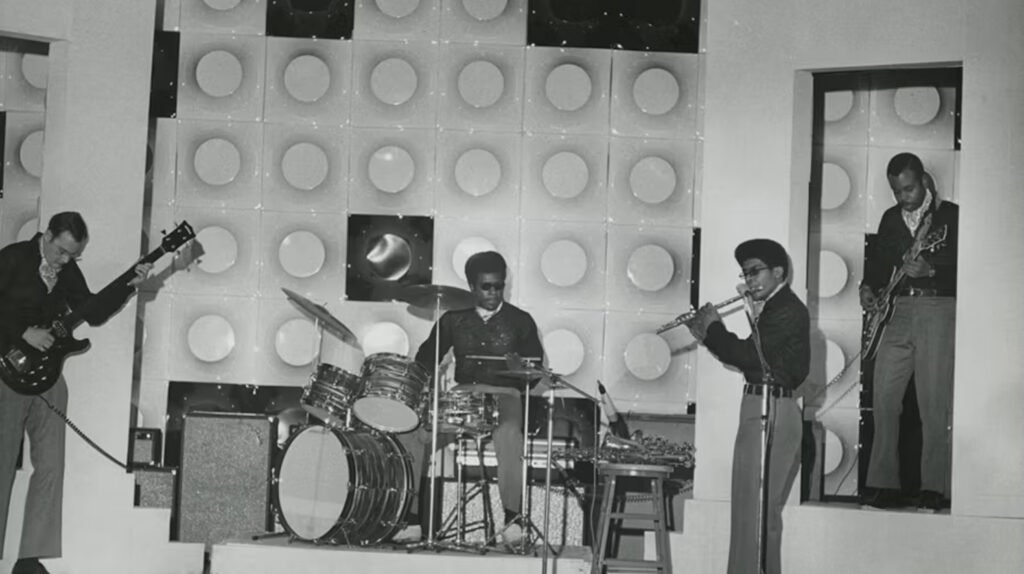“What’s one way that African American gospel quartets contributed to the development of music education? How did this impact future generations of musicians?”
African American gospel quartets advanced music education by introducing structured harmony and vocal discipline into community and church settings where formal training was often unavailable. Their emphasis on tight four-part harmonies required singers to develop strong listening skills, pitch control, and an understanding of musical roles within an ensemble. These practices became an informal classroom, teaching young musicians the fundamentals of theory and collaboration through lived experience rather than textbooks. The impact carried forward as many of these singers transitioned into teaching, choir direction, or professional music, spreading those techniques into schools and universities. Future generations inherited a model of learning that combined cultural tradition with technical skill, shaping genres from soul to R&B while legitimizing community-based training as a vital part of American music education.
Maegan Damugo, Marketing coordinator, MacPherson’s Medical Supply
Gospel quartets advanced ear training and vocal discipline at a time when formal music education was not equally accessible. Their reliance on close harmonies, call-and-response structures, and improvisation demanded that singers develop acute listening skills and precise pitch control. Many young performers learned these techniques in churches and community groups, which functioned as informal conservatories. The impact carried forward as those same singers became mentors and passed on skills that blended technical ability with cultural expression. Future generations of musicians, from soul to R&B and even hip-hop, drew from this foundation of disciplined vocal work and creative interpretation, giving American music education a distinct lineage rooted in gospel traditions.
Rory Keel, Owner, Equipoise Coffee
African American gospel quartets advanced music education by modeling complex vocal harmonies that were later adopted in both formal instruction and community-based learning. Their arrangements often layered four distinct parts with precise timing and improvisational flourishes, creating a living example of harmony, rhythm, and call-and-response structures. Schools and church programs began integrating these techniques into choirs and workshops, exposing young singers to sophisticated vocal discipline outside traditional classical training. The impact reached beyond gospel itself—future generations of musicians in genres such as R&B, soul, and jazz drew directly from the quartet tradition, shaping a broader musical vocabulary. This educational influence gave aspiring artists tools to experiment with harmony and performance styles that became foundational in American music.
Maegan Damugo, Marketing coordinator, Health Rising Direct Primary Care
African American gospel quartets played a vital role in teaching vocal discipline and harmony outside of formal institutions, often within churches and community gatherings. Their use of call-and-response, close harmonies, and rhythmic precision created an informal but highly effective training ground for young singers who lacked access to conservatories. These grassroots lessons emphasized ear training and improvisation, which later influenced music programs in schools that sought to formalize these techniques. The impact extended well beyond gospel, as generations of musicians carried those foundational skills into jazz, R&B, and soul. Future artists benefited from a lineage where technical ability and cultural expression were inseparable, shaping both popular music and the way vocal instruction was approached in educational settings.
Wayne Lowry, Marketing coordinator, Local SEO Boost
African American gospel quartets elevated the practice of learning by ear and vocal blending into a disciplined method that shaped community-based music education. Young singers were often mentored within churches or local groups, where they absorbed techniques for harmony, timing, and improvisation without formal instruction. This informal training created a foundation of musical literacy that spread into schools and choirs, where those same techniques were adapted into structured curricula. The emphasis on listening, collaboration, and call-and-response shaped not only gospel but also jazz, R&B, and later popular music. Future generations of musicians benefited from an educational model that valued both technical discipline and expressive freedom, ensuring that music training carried cultural depth alongside skill development.
Ysabel Florendo, Marketing coordinator, Alpine Roofing and Solar
My research into early 20th-century gospel quartets revealed their profound, often overlooked, role in developing aural music education. These groups, like the Golden Gate Quartet, operated without formal scores, teaching intricate four-part harmonies entirely by ear. This method, born from both tradition and necessity, created a rigorous system for transmitting complex musical ideas orally.
This practice directly preserved and codified sophisticated harmonic and rhythmic concepts that might have otherwise been lost. For future generations, this became a masterclass in vocal blend, improvisation, and active listening. I see its impact clearly in the doo-wop groups of the ’50s, the soul singers of the ’60s, and even in modern R&B vocal production, where the ability to learn and harmonize by ear remains a foundational, and highly valued, skill.
Nikita Sherbina, Co-Founder & CEO, AIScreen Digital Signage Software
Gospel quartets preserved and transmitted complex vocal traditions at a time when formal training was often inaccessible to African American communities. Through practices like call-and-response, layered harmonies, and improvisation, they created a living classroom where younger singers could learn by ear and through repetition. These groups became informal schools of music, teaching timing, blend, and stage discipline long before many had the opportunity to study in academic settings. The impact carried forward as those techniques shaped genres such as soul, rhythm and blues, and even rock, where harmony and vocal interplay remained central. For future generations, the quartet tradition offered not only a musical foundation but also a model of resilience, showing how education can thrive outside conventional institutions when rooted in community and faith.
Ysabel Florendo, Marketing coordinator, Harlingen Church
